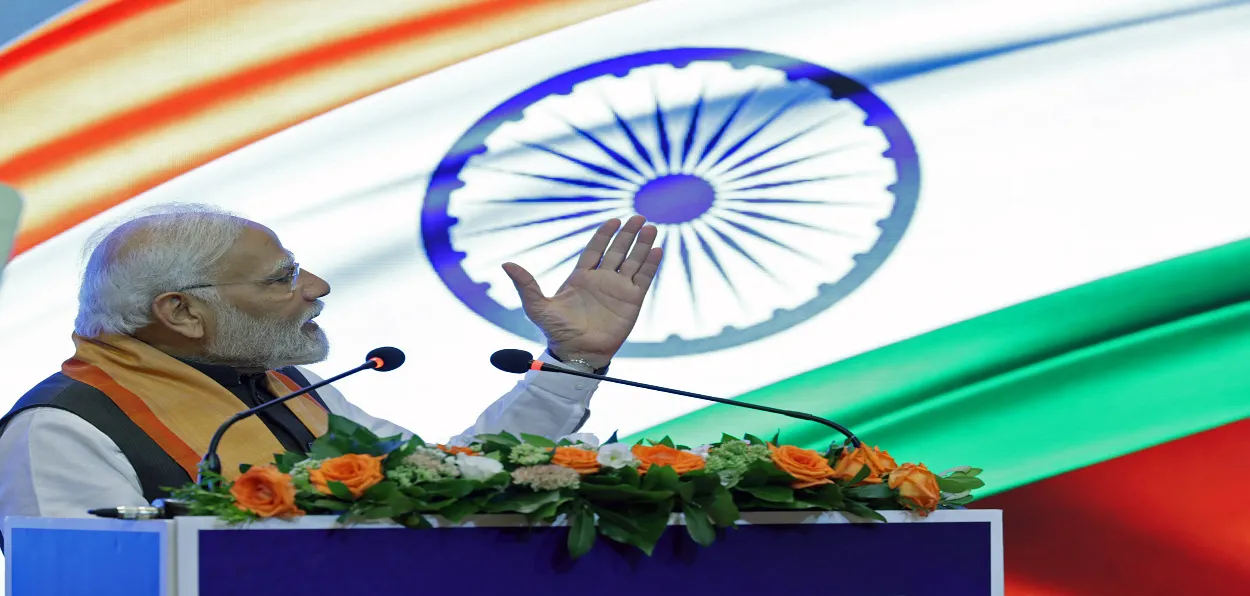
 Sushma Ramachandran
Sushma Ramachandran
India looks set to retain its tag of the fastest-growing economy in the world this year, judging by forecasts being made for the first quarter of 2023-24. Leading credit rating agency Icra Ratings has pegged growth in the April - June quarter at 8.5 percent, even higher than projections made by the Reserve Bank of India. Yet it expects growth to moderate later in the year, bringing overall growth for this fiscal to six percent.
Identifying the reasons for the strong growth in the first quarter, Icra says the continuing rise in services demand and improved investment activity linked to the front-loading of government capital expenditure have contributed to the buoyancy. It also comments on the sharply lower prices of various commodities which have expanded margins in some sectors. The agency is not so sanguine about the rest of the financial year, which could witness headwinds in the form of erratic rainfall or a slowdown in government capex in the run-up to the general elections.
The RBI’s projection for the April-June quarter, on the other hand, is slightly lower at 8.1 percent but is more optimistic about the rest of the year, despite growing inflationary pressures. It has forecast 6.5 percent growth for 2023-24, higher than any other major economy in the world.
The positive outlook shows India moving contrary to global trends. The world economy has been slowing down and is expected to be 2.7 percent in 2023 compared to 3.3 percent in 2022. Even China has been assailed by headwinds and found growth dipping to 3 percent last year.
It is no wonder then that global financial firm Morgan Stanley has upgraded this country as an investment destination while downgrading China. This comes on the heels of the leading credit rating agency, Fitch Rating downgrading the credit rating of the world’s biggest economy, the United States. In another surprising move, China has also been given an investment downgrade by this leading investment agency.
The Morgan Stanley upgrade for India has highlighted the same aspects that other external agencies like the International Monetary Fund and the World Bank have been saying for the past six months about the Indian economy. It has talked about the potential of the Indian economy to grow at 6.5 percent annually over the next decade while the Chinese economy may only be expanding by 3.9 percent per annum over the same period. It also places its bets on India being at the beginning of a long growth cycle while the Asian titan seems to be at the fag end of a similar growth phase.
These positive forecasts reflect the fact that India’s economy has been resilient, despite disruptions posed by the pandemic and then the Ukraine conflict to world growth. While India faced shrinking in growth during 2020-21 like many other countries, it managed to bounce back with a 9.1 percent increase in 2021-22 and 7 percent in 2022-23. The current fiscal is expected to end with growth at over six percent, ensuring that it is yet again the fastest-growing major economy in the world.
This feat has been achieved even though it has had to contend with external headwinds that have crippled many other economies. This has been possible largely due to policies towards trade and industry during the pandemic that were formulated with a moderate rather than expansive approach. There were few hand-outs to the industry despite criticism that the credit relief package for small and medium enterprises was inadequate for their revival. Instead, free food grains were provided to those at the
bottom of the pyramid to ward off hardship faced by the weakest segments of society. On the industrial front, the focus was kept on the pipeline of infrastructure projects to stimulate growth in the medium and long term.
The central bank has also played a major role in this regard. It aggressively hiked interest rates when inflationary pressures mounted last year. Government policies also had to be tailored to deal with the disruption of supply chains after the Ukraine war erupted in February last year. In the face of international criticism over the impact on world food availability, there was no option to contain rising food grain prices but to extend bans on the export of wheat last year and on rice this year. Energy prices were also kept under control by freezing retail prices of petroleum products for most of 2022.
The high productivity of the farm sector has been yet another reason for the sustained economic recovery of the past two years. It gave a push to demand and this, in turn, accelerated the process of industrial revival. The thrust on infrastructure growth and increasing public sector capital expenditure has also contributed to the manufacturing sector recording positive growth. The latest industrial data is showing signs of sluggishness, however, while inflation has shown a spurt lately. Both could be areas of concern for the rest of the year.
The country has also increasingly become an attractive investment destination owing to the launch of industry-friendly policies like production-linked incentive schemes. The drive to develop infrastructure helped to improve investment potential though there is still a need to cut red tape in a big way. This improved outlook has resulted in a steady flow of funds from foreign institutional investors into the country’s stock markets. FDI inflows are also growing especially in high-technology areas like semiconductors.
ALSO READ: Friday sermons in mosque must be recalibrated to suit younger generation
While this scenario appears attractive, it must be conceded that six percent growth is not enough to pull an emerging economy out of poverty It may appear alluring compared to the rest of the world but it is not sufficient for a vast country with huge regional inequalities. If the declared goal of becoming a developed country by 2047 is to be achieved, the economy has to shift gears at an even faster pace.
